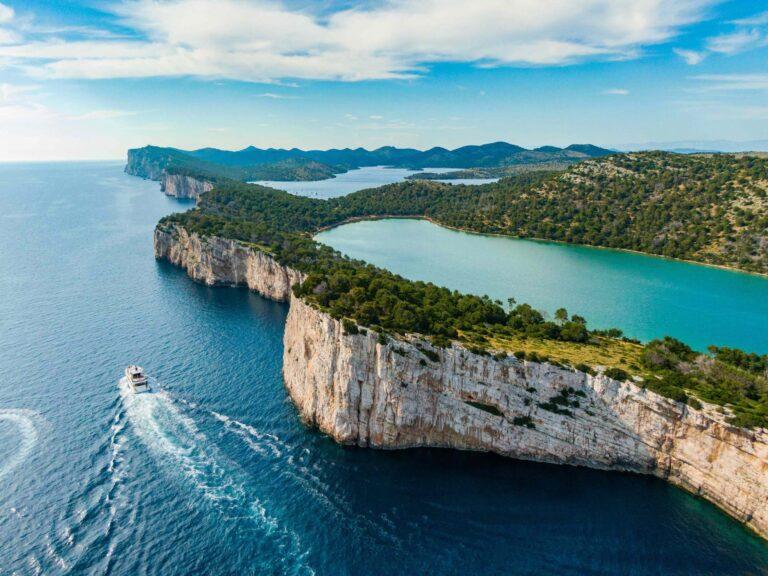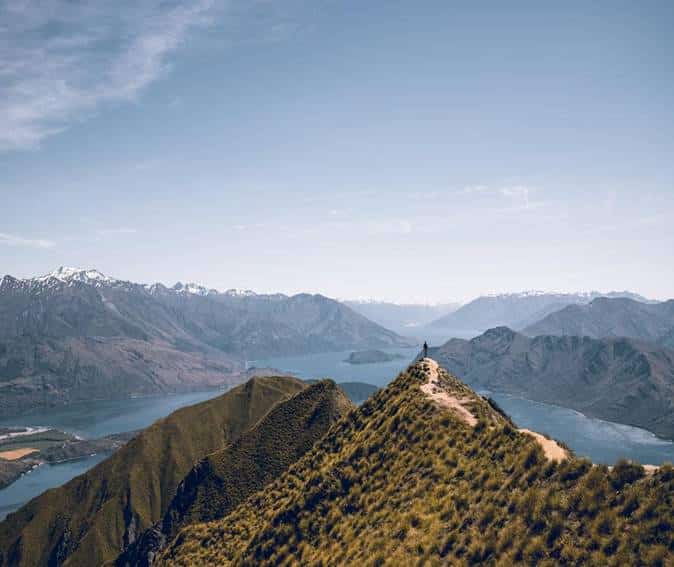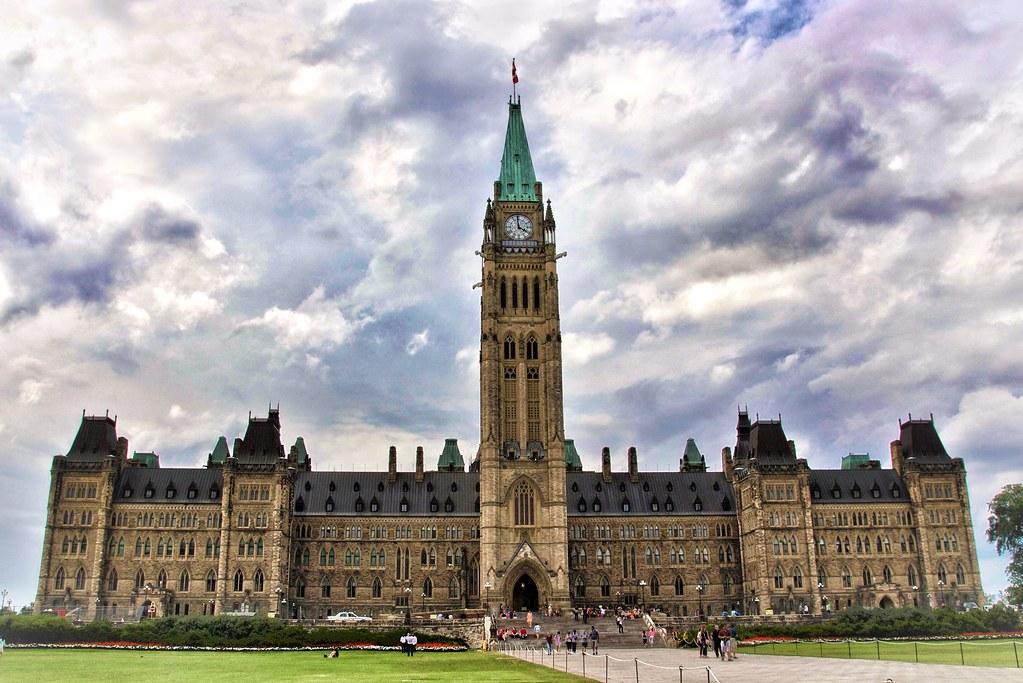Guide to Tierra del Fuego: Argentina’s Dramatic National Park
Located at the southernmost tip of Argentina, Tierra del Fuego is a land where dramatic landscapes and pristine wilderness converge in a way that feels almost otherworldly. The park stretches along the Beagle Channel and offers a striking mix of snow-capped mountains, dense forests, glacial lakes, and winding rivers.
Its unique location on the edge of the continent gives visitors a rare opportunity to witness a region where the natural world seems untouched and wild. The national park is especially a paradise for hikers and outdoor enthusiasts, offering trails that cater to all levels of experience.
From leisurely walks along the coast to challenging treks that ascend through lenga forests to reveal panoramic views of the channel and the Andes. Here’s our comprehensive guide to Tierra del Fuego National Park;
Please Download Our Mobile App here.
Overview of Tierra del Fuego National Park
Located on the southern tip of Argentina on the island of Tierra del Fuego, Tierra del Fuego National Park is the country’s southernmost national park. It covers an area of 243 square miles (630 sq km). Stretching 37 miles (60 km) north from the Beagle Channel and bordering Chile, the park can be reached by car or via the famous End of the World Train.
While not Argentina’s first national park, Tierra del Fuego was the country’s first protected shoreline area. It played a key role in safeguarding the subantarctic forests of Patagonia. The park is particularly celebrated for its breathtaking scenery. It encompasses rugged coastlines, dense forests, glacial valleys, sparkling lakes, soaring mountains, and cascading waterfalls.
Notable lakes within the park include Fagnano and Roca. Tierra del Fuego encompasses diverse ecosystems, from the Altos Andes to the Patagonian Forest, creating a landscape marked by jagged peaks, semi-deciduous woodlands, and glacially carved valleys. Along the beaches and nearby bays, visitors can admire the striking contrast of dramatic mountains and serene valleys.
Also Read: Best Resorts in Argentina.
Wildlife in Tierra del Fuego National Park
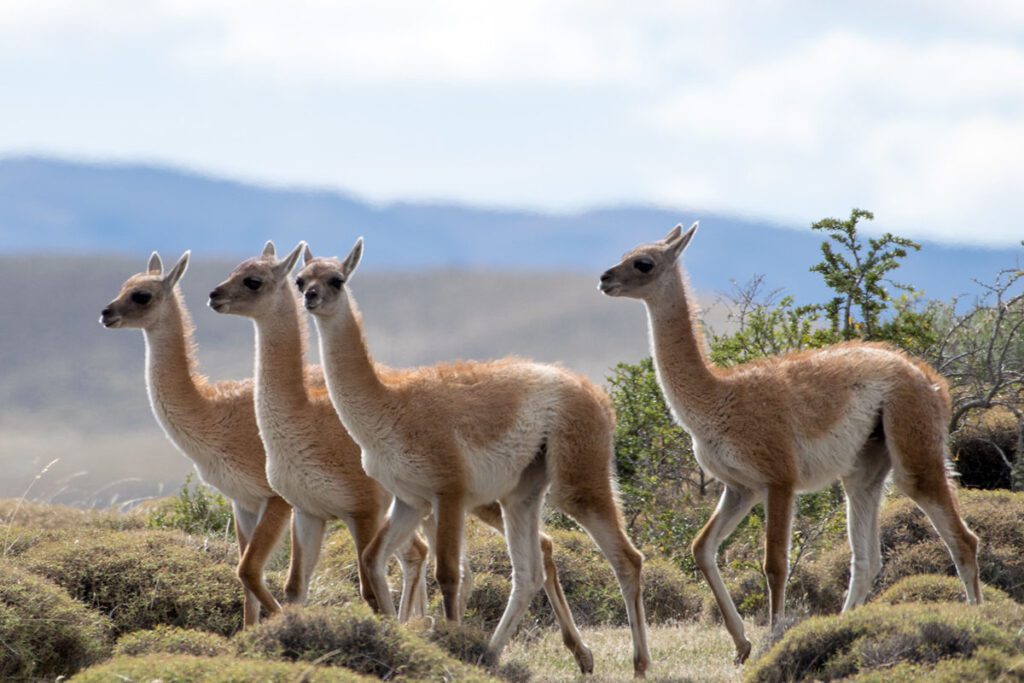
Tierra del Fuego National Park is a haven for wildlife, with its subantarctic forests providing a home for an intriguing variety of mammals. Around 20 species can be found here, including the native Andean fox, gray fox, guanaco, muskrat, and the southern river otter. The park is also home to non-native species introduced by European and North American settlers.
These include; the European rabbit and the North American beaver, which have become part of the local ecosystem. Birdlife in the park is equally impressive, with roughly 90 species thriving in the diverse habitats. Among the most notable is the majestic Andean condor.
Other remarkable species include the austral parakeet, Patagonian woodpecker, blackish oystercatcher, kelp goose, Magellanic oystercatcher, and the torrent duck. Along the coast and in the surrounding waters, marine life flourishes as well, featuring crabs, South American sea lions, sardines, scallops, Falkland sprat, and jellyfish. Seabirds such as penguins, albatrosses, and petrels are commonly seen.
Best Time to Visit Tierra del Fuego National Park
The best time to visit Tierra del Fuego National Park largely depends on the type of experience you’re seeking. Summer (December to February) is the peak season. It offers long daylight hours—up to 18 hours—along with mild temperatures ranging from 40 to 60°F (5–14°C). These conditions make it perfect for hiking, exploring, and other outdoor activities.
While this is the busiest time of year with higher hotel rates and more visitors, the park’s more remote areas still provide moments of tranquility. For those who prefer fewer crowds, the shoulder seasons of spring (October to November) and autumn (March to April) are excellent alternatives.
Spring brings blooming flowers, budding trees, and lively bird activity, while autumn showcases fiery red and gold forest colors, creating a spectacular backdrop for hikes. Though days are shorter than in summer, conditions remain pleasant for outdoor adventures. Early spring is ideal for spotting Magellanic penguins before they start migrating north.
Winter (June to September) transforms the park into a snowy wonderland, perfect for skiing and snowboarding at Cerro Castor. Hiking is more limited during these months due to colder temperatures and shorter daylight. However, the serene landscapes, sparse crowds, and lower prices make it a magical time for an off-season adventure.
Getting to Tierra del Fuego National Park
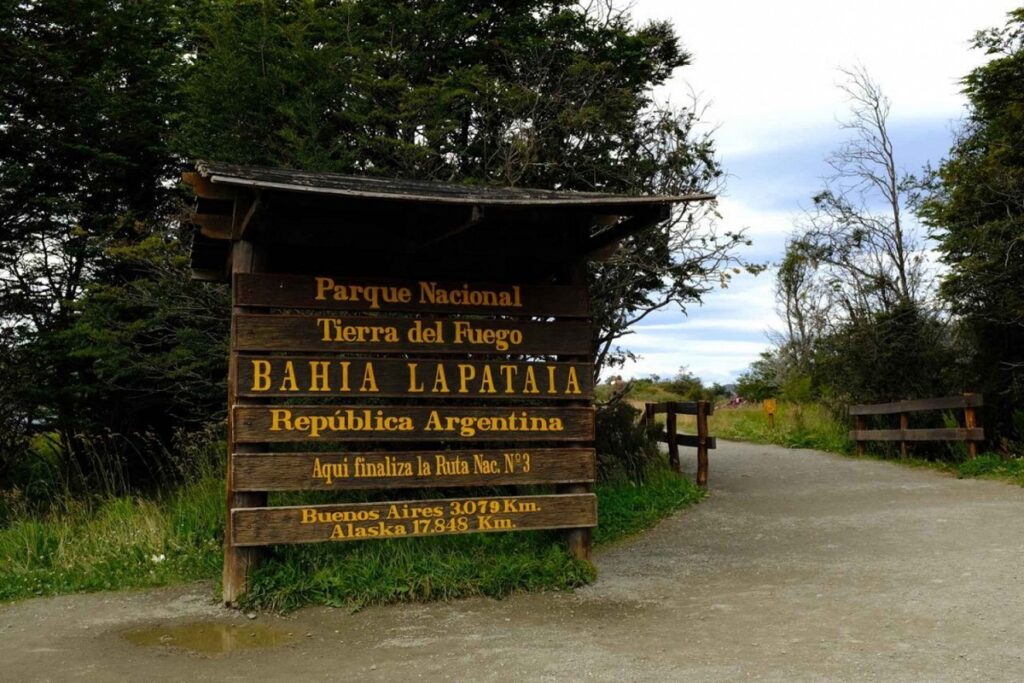
The most efficient way to reach Tierra del Fuego National Park from Buenos Aires is by air. There are several direct flights to Ushuaia, the city that serves as the park’s gateway. The flight takes roughly three and a half hours. Flights depart from either Aeroparque Jorge Newbery or Ezeiza International Airport and land at Malvinas Argentinas International Airport in Ushuaia.
Once in Ushuaia, visitors have several options to reach the park entrance. A quick 15-minute taxi or private transfer provides a convenient and stress-free ride. For road-trippers, renting a car allows for complete flexibility to explore the park and surrounding areas at your own pace.
Guided tours are another popular choice, offering the benefit of transportation combined with expert insight into the park’s trails and landmarks. For scenic diehards, the journey on the historic End of the World Train is the perfect way to reach the park. The train winds through striking landscapes leaving you rather mesmerized.
Other Activities in Tierra del Fuego National Park
Tierra del Fuego National Park offers a variety of activities that let visitors fully immerse themselves in its natural wonders. The park’s glacial landscapes, framed by towering mountains and cascading waterfalls, provide a stunning backdrop for exploration and adventure. Numerous trails wind through the park and across the surrounding islands, each offering a chance to discover hidden corners of this remote wilderness.
Park Fees in Tierra del Fuego National Park
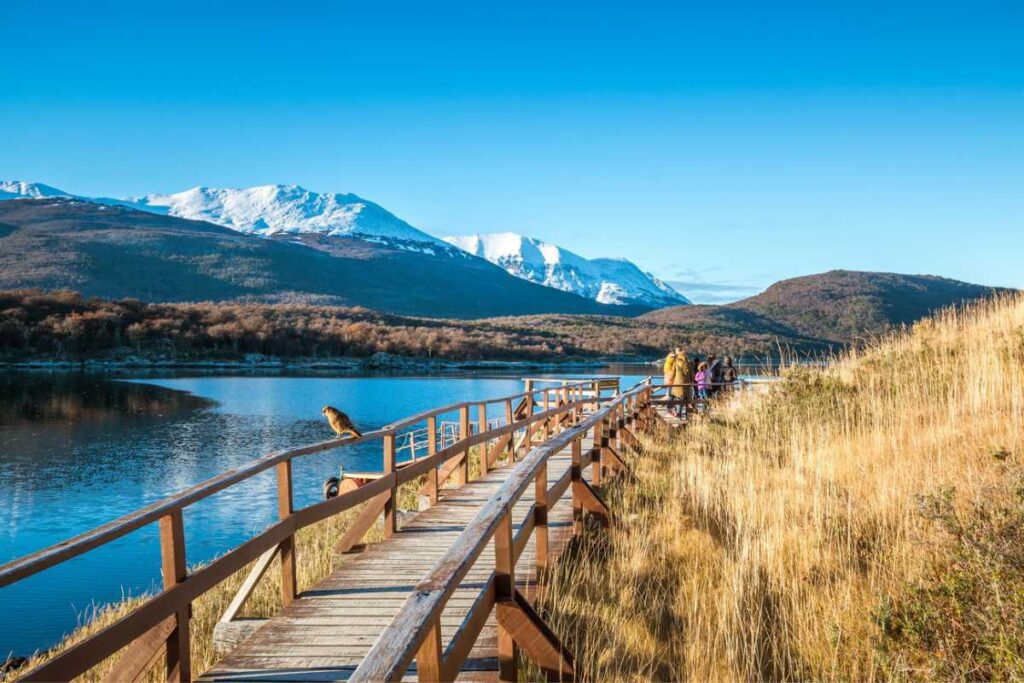
Admission fees to Tierra del Fuego vary depending on nationality and residency. International tourists currently pay ARS 40,000 ($200). Argentine citizens, provincial residents, students, and children benefit from reduced rates, making the park more accessible to locals and families. Additionally, retirees, pensioners, and people with disabilities are granted exemptions.
FAQs
Is Tierra del Fuego National Park worth visiting?
Absolutely, Tierra del Fuego National Park is worth a visit. The park showcases a remarkable variety of sub-Antarctic scenery, from rugged mountains and dense forests to serene coastal areas. Well-maintained hiking trails make it easy to explore these environments at your own pace. In addition to the breathtaking scenery, visitors have the chance to encounter distinctive wildlife.
How long to spend in Tierra del Fuego National Park?
To truly experience Tierra del Fuego National Park, plan for at least one full day. This allows you to get a sense of the park’s striking landscapes and enjoy a taste of its unique trails. However, if you want to explore more thoroughly or take on longer treks through the mountains, setting aside three to five days is ideal.
Conclusion
For travelers seeking a destination that combines raw natural beauty with adventure and reflection, Tierra del Fuego National Park delivers an unforgettable experience. Its dramatic landscapes, abundant wildlife, and rich history make it one of Argentina’s most compelling national parks.

